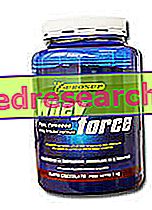
Cosmetics for dry skin
A dehydrated skin promotes the penetration of foreign substances, the onset of contact inflammation and causes the loss of elasticity and plasticity. The application of cosmetic formulations on dehydrated skin is able to restore smoothness, softness and distensibility.

In the dermocosmetic field, when we talk about hydration, we refer to the water contained both in the dermis and in the epidermis, in reality, with topical treatments we can only intervene on the hydration of the stratum corneum. Moreover, there is scientific evidence that skin dehydration is mainly caused by defects in the hygroscopic power of the stratum corneum or by deficiency in the constituent elements of hydro-lipid barrier, and it is for this reason that cosmetic moisturizing formulations are formulated to convey compounds capable of bringing water and restructuring the epidermal barrier. The hydration strategies are basically two:
- Adjusting the Skin Water Content
- Adjust the Skin Lipid Content
A good moisturizing cosmetic should work on both levels, with the prevalence of one or the other depending on the type of product, in order to effectively replenish and restore the skin's hydrolipid film.
Reviews of some Moisturizing Cosmetics:
- AQUAporin ACTIVE refreshing balm-lotion
- Bio-Goji moisturizing day cream
- Nivea Visage Refreshing moisturizing cream
- pH 5 moisturizing body emulsion
- Shorea moisturizer
- Aveeno Cream with colloidal oats
- Hydro-Protective Cream
- Wild rose moisturizing cream - faces
- Day moisture protection SPF 15
- Night moisture recharge
- Moisturizing treatment cream
- Super moisturizing fluid treatment
Adjust the Water Content
wetting agents
To regulate the water content of the skin it is possible to apply substances that act through a hygroscopic mechanism, the so-called surface humectants of a water-soluble nature which, according to the type of substance, bind the water present in the cosmetics, the environmental humidity and that coming from the upper layers, by chemical interaction or by gelation equlibrio. Among these we find: glycerol, sorbitol, glycols, polyethylene glycols, glucose ethers, etc.
Glycerol
The decades-long use of glycerol has found justification in studies that demonstrate its physiological role as a component of the pool of hydrophilic factors that contribute to determining the cornein water holding capacity. The glycerol, applied to the skin, increasing the water content of the stratum corneum, is able to restore a normal functioning of the proteases involved in the lysis of the corneosomes, thus regularizing the desquamation. Furthermore, it prevents the phase transition that leads to intercorneocyte lipids to take - in dry conditions - stiffness and fragility, and accelerates the restoration of the damaged skin barrier.
Hyaluronic acid
The humectant function is also performed by macromolecules with a high water-reactive capacity, such as natural collagen, hyaluronic acid and some plant derivatives. In cosmetics, these substances, which stratify into a non-occlusive hydrophilic epicutaneous film, are used as anti-dehydrating agents.
In particular, hyaluronic acid, belonging to the family of glycosaminoglycans, high molecular weight polymers present in the dermis, is known for the very high capacity to bind water, which results in an increase in the viscoelastic properties of the skin and in an increase in the skin tone.
The market is also available in the hydrolyzed form, or low molecular weight hyaluronic acid (<10, 000 dalton) which, according to the manufacturer, penetrates into the deeper layers of the epidermis and provides hydration from the inside.
Mucilages
In the field of plant derivatives, we find heteropolysaccharidic structures with high hydrophilicity, such as mucilages, of which the extracts of mallow, lime and marshmallow are rich, able to form a thin film on the skin, which acts like an absorbing sponge water and yields to the stratum corneum. Other hydrophilic polymers have a moderate anti-dehydrating action which, thanks to the films they form on the epidermis, are able to retain water: cellulose ethers, polyvinylpyrrolidone, polyvinyl alcohol, etc.
urea
Still in the field of moisturizing ingredients, there are molecules capable of modifying the interaction between skin and water, such as urea and low concentration alpha-hydroxy acids. They are all low molecular weight water-soluble and hygroscopic substances which, following a topical action, are able to solubilize in the water component of the hydrolipidic film, penetrate into the intercorneocytic spaces, dissolve in the liquid microstrata interposed between the lipid lamellae of the cement, penetrate to the internal corneocytes and disperse between the keratin fibers.
Urea, like glycerol, is widely used in formulations with a moisturizing activity as a natural component of NMF ( Natural Moisturizing Factor ), in which it is present in concentrations between 4-7%. It is a polar molecule capable of interacting with keratins, breaking the inter and intramolecular hydrophobic bonds, increasing the free hydrophilic sites, and increasing the water content of the corneum.
At low dosage, urea has a moisturizing effect and gives the skin greater softness and superficial smoothness because it completes the detachment of the scales already partially raised. At higher concentrations, its keratolytic activity occurs more markedly, making it a useful ingredient in situations of hyperkeratosis.



